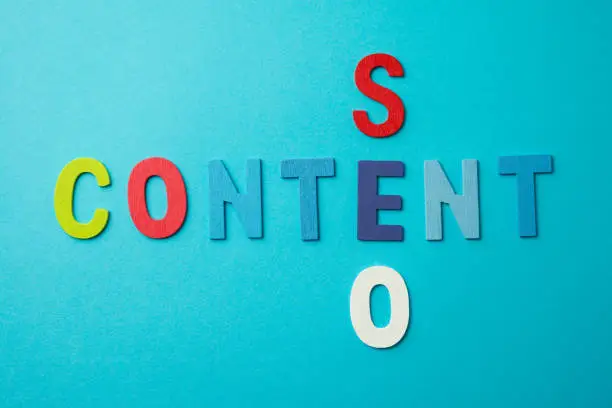How to Use Multiple Stories in Content to Boost SEO Naturally
In today’s fast-paced digital world, getting your content noticed on Google takes more than keywords and technical SEO. Readers and search engines are looking for content that feels real, helpful, and engaging. One powerful method to stand out is by using multiple stories within your content. Stories connect on a human level, make complex topics easier to understand, and hold the reader’s attention longer.
Not only does this increase trust and improve your EEAT score (Experience, Expertise, Authoritativeness, Trustworthiness), but it also boosts time on page and user interaction two strong SEO signals. This guide will show you how to use multiple stories strategically, so your content ranks higher and leaves a lasting impression.
Why Using Stories Improves SEO
It Engages the Reader Emotionally
People connect with stories better than facts alone. When your content includes personal experiences or real-life examples, it feels more authentic. This emotional connection keeps readers engaged and reduces bounce rates—something Google notices.
It Boosts Time on Page
When readers find your content interesting and relatable, they stay longer. The more time someone spends on your site, the better your content looks to search engines. Multiple stories give readers a reason to keep scrolling.
It Increases Trust and Authority (EEAT)
Google prefers content written by people who show experience and expertise. Telling stories from personal or professional experience helps prove you’re knowledgeable and trustworthy. It shows that you’ve actually lived or observed what you’re writing about.
It Encourages Natural Keyword Placement
Instead of stuffing keywords awkwardly, you can blend them smoothly into the flow of a real story. This makes your writing sound more human while still helping search engines understand your topic.
It Helps with Internal Structure and SEO Signals
Each story can support a subheading, helping you structure your article with H2s and H3s. This improves readability and gives your article a strong SEO foundation.
Types of Stories You Can Use in Content
● Personal Experience
Share your own challenges, successes, or lessons. This builds connection and positions you as an expert.
● Client or Customer Stories
Talk about how others solved similar problems using your method or service. This adds credibility and relatability.
● Industry Examples or Trends
Use well-known cases or industry shifts as examples to support your message.
● Fictional but Relatable Scenarios
Create a simple “imagine this…” story to help readers visualize a situation even if it’s not real.
How to Structure Multiple Stories in One Article
Match Each Story to a Key Point
Each story should have a purpose. For example, if you’re explaining why long form content works, tell a story about how a 1500-word blog post outranked competitors.
Use Headings and Subheadings
Break your content into clear sections. Each story can support an H3 under a major H2. This makes it easier to read and scan.
Guide the Reader Smoothly
Use transitions like:
- “Here’s a real-life example…”
- “Let me share a quick story…”
- “This reminds me of a situation where…”
This helps the reader follow along without getting lost.
Always Relate the Story Back to the Topic
Don’t just tell a story and move on. After each one, explain how it supports your main point or how it connects to SEO.
SEO Benefits of Using Multiple Stories
● Better Dwell Time
People stay longer when your content is interesting. Google reads this as a sign your content is helpful and relevant.
● Higher Engagement
If your stories spark curiosity, users are more likely to scroll, click, and even share. This boosts overall visibility and performance.
● More Natural Backlink Potential
Great stories are memorable. Readers, bloggers, and even journalists might reference or link to your article, increasing your domain authority
Tips for Writing Story-Driven Content That Ranks
Know Your Audience
Understand who you’re writing for and what kind of stories they relate to. If your audience is business owners, use business examples not travel adventures.
Use Conversational Language
Keep the tone natural, like you’re talking to a friend. This helps readers feel more connected and encourages them to keep reading.
Stay Focused on the Main Topic
Don’t go off on unrelated tangents. Every story should help explain or prove your central point.
Don’t Overdo It
Too many stories can feel cluttered. Use 2–4 solid stories in a 1200-word article, spaced out logically.
Edit for Clarity and SEO
After writing, read it out loud. Remove anything that feels confusing or repetitive. Then double-check your keywords, headings, and readability.
Read also: The Hidden Advantages of Crafting AI Content That Feels Human
Conclusion
Storytelling is one of the most powerful tools in content marketing, and using multiple stories can take your SEO strategy to the next level. Instead of just sharing facts or tips, stories help you connect with readers emotionally, build trust, and make your content memorable. When your article includes well-placed, relevant stories, it keeps users on the page longer, encourages engagement, and provides a natural structure for SEO optimization.
Whether you use personal experiences, customer case studies, or fictional scenarios, each story should add value to the reader and support your message. By following the principles of EEAT and writing with empathy and clarity, your content becomes more than just optimized, it becomes truly helpful. And that’s exactly what Google wants. So the next time you sit down to write, don’t just inform connect through storytelling and boost your rankings the smart, natural way.
FAQs
1. Why should I use multiple stories in my content?
Using multiple stories increases engagement, builds trust, and keeps readers on the page longer factors that help improve your SEO naturally.
2. What type of stories work best for SEO content?
Personal experiences, customer success stories, industry examples, and relatable scenarios are most effective when tied to your main topic.
3. Can storytelling really affect search rankings?
Yes, storytelling improves metrics like dwell time, bounce rate, and engagement all of which influence how Google ranks your page.
4. How many stories should I include in a 1200 word article?
Including 2–4 well-connected stories is ideal. Make sure each one supports your content’s purpose and improves reader understanding.
5. Is storytelling suitable for all types of content?
Yes, storytelling can enhance blogs, product pages, landing pages, and even technical content as long as it stays relevant and helpful.






